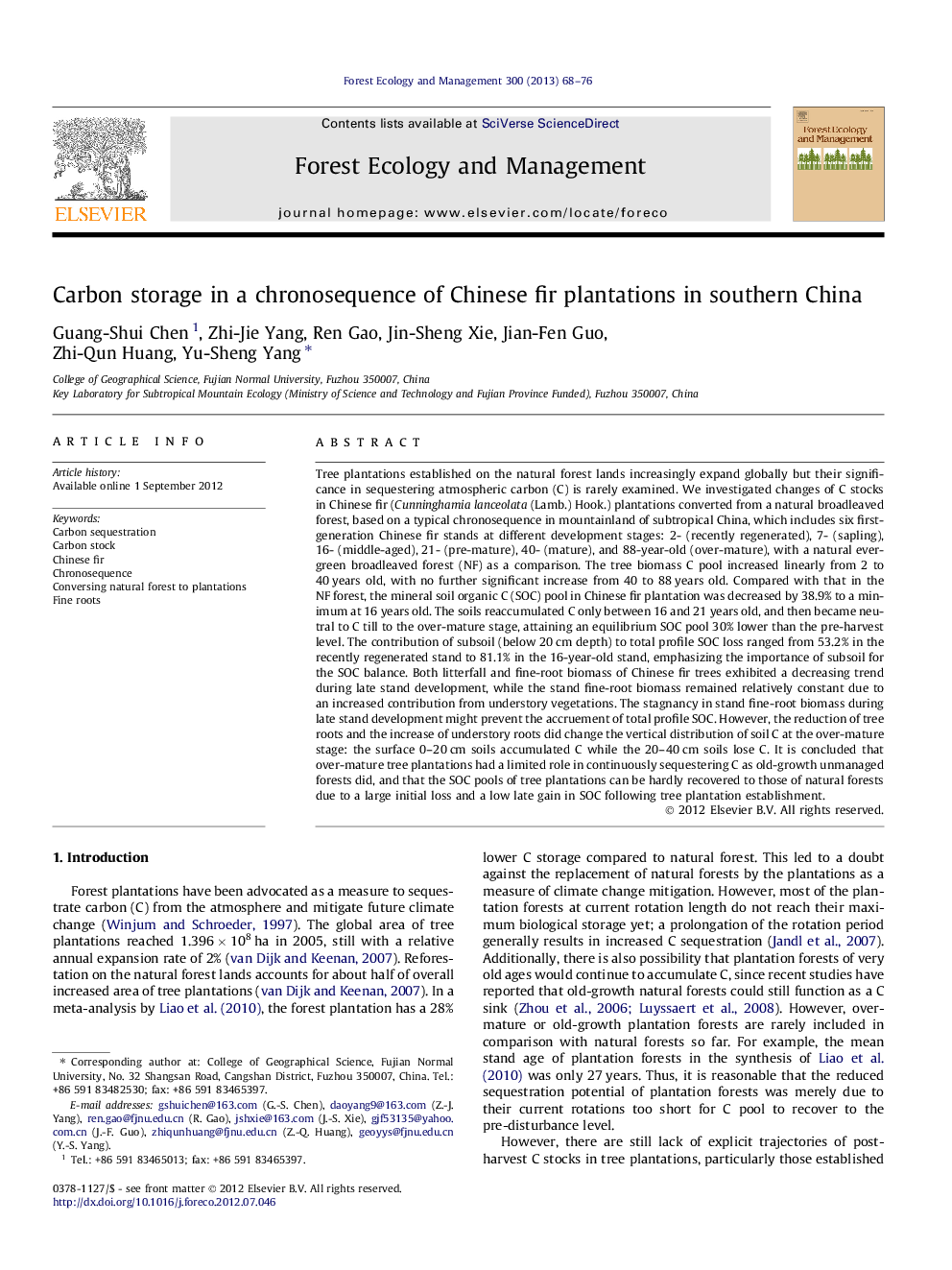| Article ID | Journal | Published Year | Pages | File Type |
|---|---|---|---|---|
| 86905 | Forest Ecology and Management | 2013 | 9 Pages |
Tree plantations established on the natural forest lands increasingly expand globally but their significance in sequestering atmospheric carbon (C) is rarely examined. We investigated changes of C stocks in Chinese fir (Cunninghamia lanceolata (Lamb.) Hook.) plantations converted from a natural broadleaved forest, based on a typical chronosequence in mountainland of subtropical China, which includes six first-generation Chinese fir stands at different development stages: 2- (recently regenerated), 7- (sapling), 16- (middle-aged), 21- (pre-mature), 40- (mature), and 88-year-old (over-mature), with a natural evergreen broadleaved forest (NF) as a comparison. The tree biomass C pool increased linearly from 2 to 40 years old, with no further significant increase from 40 to 88 years old. Compared with that in the NF forest, the mineral soil organic C (SOC) pool in Chinese fir plantation was decreased by 38.9% to a minimum at 16 years old. The soils reaccumulated C only between 16 and 21 years old, and then became neutral to C till to the over-mature stage, attaining an equilibrium SOC pool 30% lower than the pre-harvest level. The contribution of subsoil (below 20 cm depth) to total profile SOC loss ranged from 53.2% in the recently regenerated stand to 81.1% in the 16-year-old stand, emphasizing the importance of subsoil for the SOC balance. Both litterfall and fine-root biomass of Chinese fir trees exhibited a decreasing trend during late stand development, while the stand fine-root biomass remained relatively constant due to an increased contribution from understory vegetations. The stagnancy in stand fine-root biomass during late stand development might prevent the accruement of total profile SOC. However, the reduction of tree roots and the increase of understory roots did change the vertical distribution of soil C at the over-mature stage: the surface 0–20 cm soils accumulated C while the 20–40 cm soils lose C. It is concluded that over-mature tree plantations had a limited role in continuously sequestering C as old-growth unmanaged forests did, and that the SOC pools of tree plantations can be hardly recovered to those of natural forests due to a large initial loss and a low late gain in SOC following tree plantation establishment.
► We assessed C storage changes in a Chinese fir chronosequence. ► Over-mature Chinese fir stand sequestered less C both in tree biomass and soils. ► Forest conversion caused a large initial loss and a low late gain in SOC. ► Subsoil dominated the total SOC loss following forest conversion. ► Understory vegetations dominated fine root biomass at over-mature stage.
